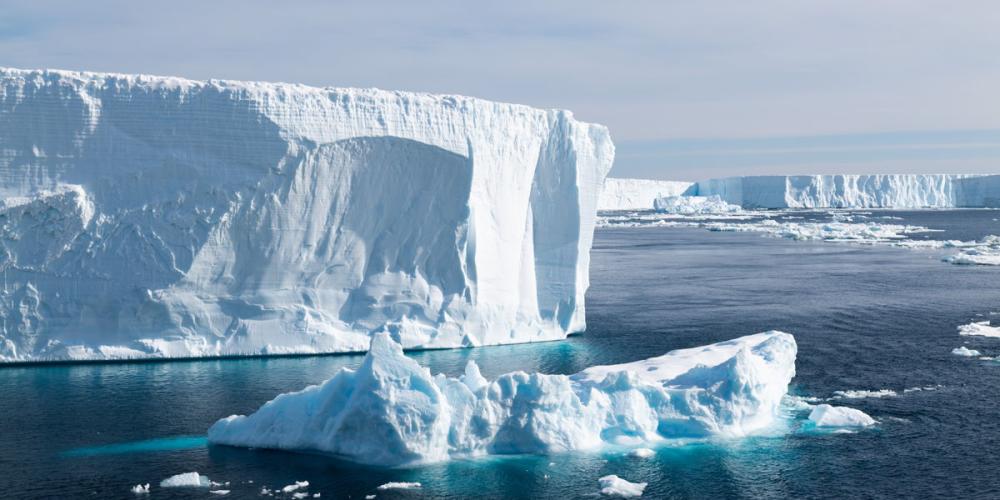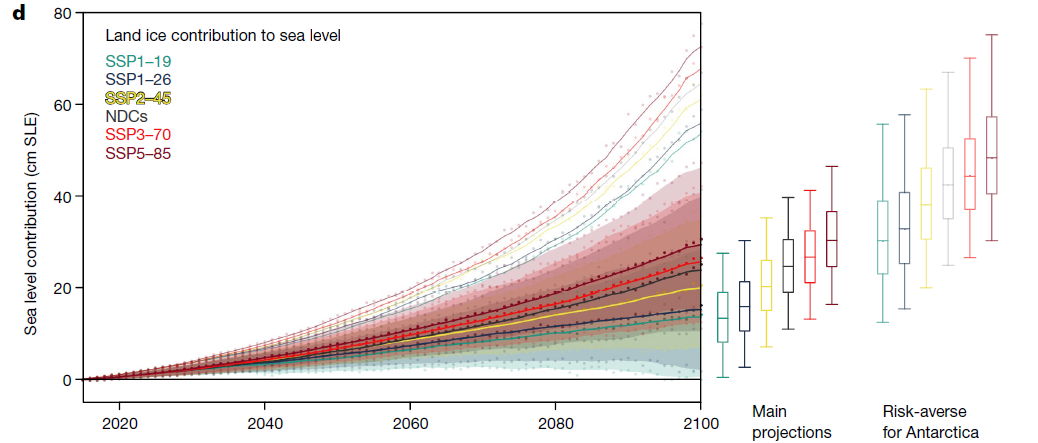
Climate change would need to be limited to 1.5°C
New research from a large international group of scientists, including the Physical Geography research group at the Vrije Universiteit Brussel led by professor Philippe Huybrechts, suggests that sea level rise due to the melting of land ice could be halved this century if we meet the Paris targets to limit global warming to 1.5°C.
The new study, published in Nature, examines the contribution of land ice to sea level rise in the 21st century. Huybrechts: “Even if we were to stop all greenhouse gas emissions now, global sea levels would continue to rise. But our study shows that an ambitious climate policy in line with the Paris Agreement can still limit the damage. This also means that many countries will have to update their pledges in the run-up to COP26 in November to reduce greenhouse gas emissions.”
Glaciers and ice sheets are currently responsible for about half of global sea level rise, with the rest coming largely from the expansion of the oceans as they warm. Previous predictions had used older emissions scenarios and could not evaluate the uncertainty in the future as thoroughly because of the limited number of simulations. The paper, “Projected land ice contributions to twenty-first-century sea level rise”, was co-authored by post-doctoral researcher Dr Sébastien Le clec’h and PhD student Jonas Van Breedam alongside Huybrechts. It used a large number of computer models combined with statistical techniques to make predictions for the latest socio-economic scenarios to inform the Intergovernmental Panel on Climate Change’s Sixth Assessment Report, due to be published this year, of which Huybrechts is a lead author. This study updates the scenarios and combines all land ice sources into a more complete picture that predicts the likelihood of different levels of sea level rise. Huybrechts: “The study used a larger and more sophisticated set of climate and ice models than ever before, using nearly 900 simulations from 38 international groups combined with statistical techniques to improve the understanding of uncertainty about the future.”
 It predicts that limiting global warming to 1.5°C would reduce losses on the Greenland ice sheet by 70% and losses on glaciers by half, compared to current emissions pledges. For Antarctica, projections remain the same for different emissions scenarios, as it is unclear whether snow falling in the cold interior of the ice sheet would compensate for melting on the coast. Under a “pessimistic” scenario, with much more melting than snowfall, ice losses in Antarctica could be five times greater.
It predicts that limiting global warming to 1.5°C would reduce losses on the Greenland ice sheet by 70% and losses on glaciers by half, compared to current emissions pledges. For Antarctica, projections remain the same for different emissions scenarios, as it is unclear whether snow falling in the cold interior of the ice sheet would compensate for melting on the coast. Under a “pessimistic” scenario, with much more melting than snowfall, ice losses in Antarctica could be five times greater.
Antarctica is difficult to predict
The VUB team used advanced three-dimensional models of the Greenland and Antarctic ice sheets driven by climate scenarios from atmospheric and oceanic general circulation models. Huybrechts: “Antarctica is the ‘wild card’ of sea level rise: difficult to predict and crucial to the top end of the projections. In a pessimistic scenario, in which Antarctica is very sensitive to climate change, there is a 5% chance that the contribution of land ice to the sea level rise will be more than 56cm in 2100, even if we limit warming to 1.5°C. Coastal defences must therefore be flexible enough to take into account a wide range of possible sea level rises, until new observations and models can improve the clarity of Antarctica’s future."
"Thus, if climate policy becomes much more ambitious, central predictions for sea level rise due to melting ice could be reduced from 25cm to 13cm by 2100, with a 95% chance of being less than 28cm instead of the current upper limit of 40cm. This would mean a less severe increase in coastal flooding.”
The Nature article: ‘Projected land ice contributions to twenty-first-century sea level rise’.